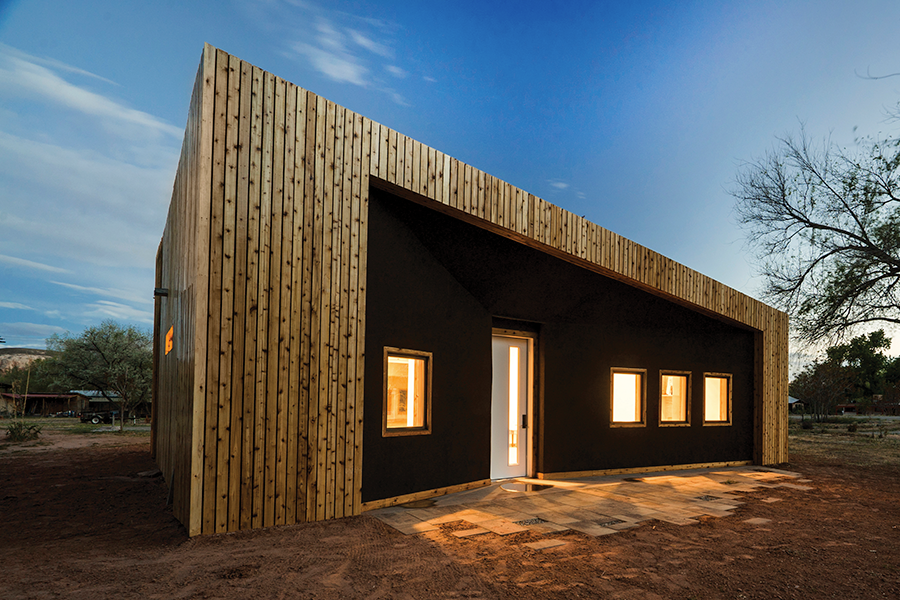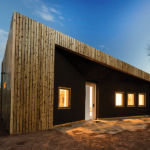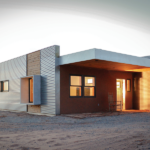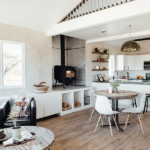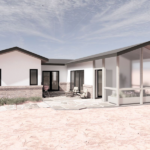There are no paved roads to this construction site. There’s no running water, no power. Cement trucks and other heavy machinery aren’t an option here, but graduate students from the College of Architecture + Planning are not deterred. They have found a key ingredient that makes it possible to build a home in a remote corner of the Navajo Nation in just 12 weeks: sweat equity.
As part of the DesignBuildUTAH@Bluff program, created to give hands-on instruction in creativity and construction, students relocate to the southeastern Utah town of Bluff every year to partner with the nearby community—and the future home-owner—in building a house with an emphasis on sustainability and community. Through in-kind donations and money from the Navajo Revitalization Fund, the students and homeowners gather materials for doors and windows, a foundation, concrete slabs, plumbing, electrical wiring, water collection systems, and everything else for less than $70,000. The rest of the project—hammering, digging, painting, and plastering—is powered by good old-fashioned blood, sweat, and tears.
“The concept of ‘sweat equity’ is one in which the client uses their own labor, rather than cash, as a form of contribution in the building process,” says Hiroko Yamamoto, program co-coordinator, instructor, and technical lead with husband Atsushi Yamamoto. “It’s a tool for homeowner empowerment and capacity building. We all work together and experience learning opportunities.”
Since its founding in 2000, DesignBuildUTAH@Bluff students have finished 34 projects, including the most recent Horseshoe House that was completed in late November 2021. The homes are designed to be built by hand, with small tools, and with materials that are readily available. Blueprints also include phases so that homeowners can construct their own additions in the future. To expand their reach beyond one home per year, the program has also partnered with the Nááts’íilid Initiative to provide prototype designs of similar houses others can build.
